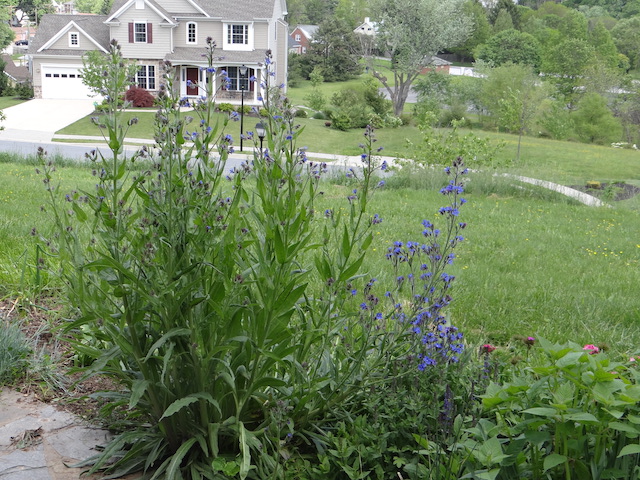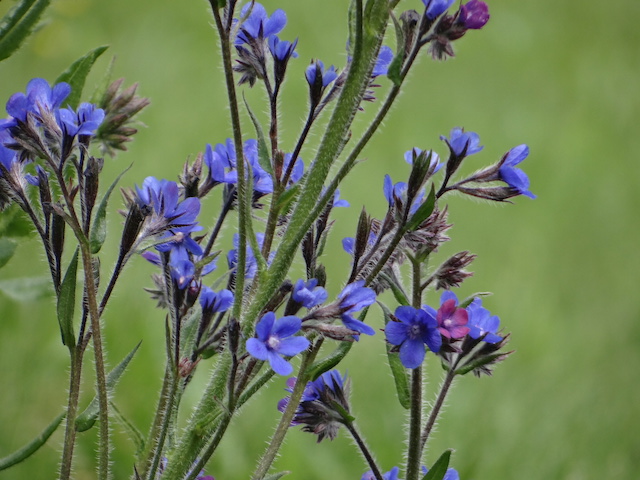I remember with a child’s eyes the standout cobalt blue and with my ears Grandma’s voice: “Susie, that’s Ancheeewsa”. And that’s why I happen to be growing Anchusa; it’s a plant of fond memories.
Called Italian Bugloss as a common name (from the Greek Buglosson for the ox-tongue flower shape), it forms a basal rosette the first year and the following year in May-June, it sends up tall floral spikes with the characteristic true blue flowers. We really don’t have a lot of plants with blue flowers that don’t trend toward purple.
I started my Anchusa azurea from seed. In PA it is in a bed that I amended with small gravel grit to enhance drainage. In Westminster, it is planted in a new bed with shallow soils by a stone walkway–too close! It doesn’t like winter wet– so good drainage is important–but also avoid really dry soils. Another point to consider–it can get big and the stems have a tendency to flop outwards. So put it toward the back of your border and stake it, especially if you have enriched your soils. In June, my poorly placed Italian Bugloss in Westminster is now over 6 feet tall and is crowding the sidewalk!
Related to Borage (note the characteristic bristly hairs), Anchusa azurea is attractive to bees. I have seen bumblebees clinging to it in MD and in PA there would be many other types buzzing around. Recommendations are to cut the flower stalks back for rebloom (which I have not experienced), but cutting way back helps prolong the life of this short-lived high-humidity-hating perennial and aids in overwintering it. A root zone winter mulch away from the crown is said to be helpful as well.
I have not noticed any new self-sowed seedlings from my plants, but other areas in the Pacific and bordering western states regard some types of Anchusa as invasive pasture weed pests from prolific self seeding. Perhaps if I saved seed I *could* start some new plants. However, you can make root cuttings or sever crown offsets and get new plants that way.
Note: “Anchusa” is used for many plants of the Borage family, some of which have a root pigment (in Greek “ankousa” ) in the roots that was used as an ingredient for cosmetic paints. “Alkanet” is a red dye made from same. Italian Bugloss is often called these, but might not have the pigment in the roots.




